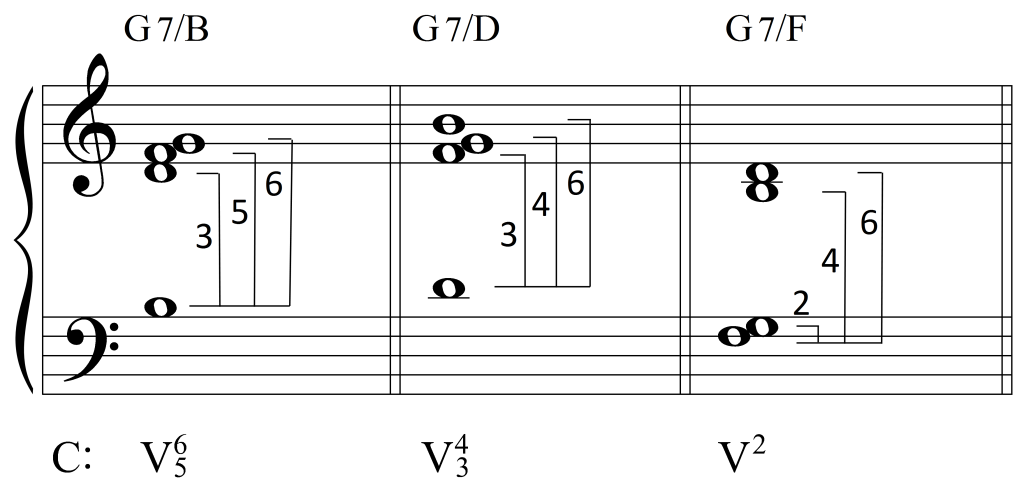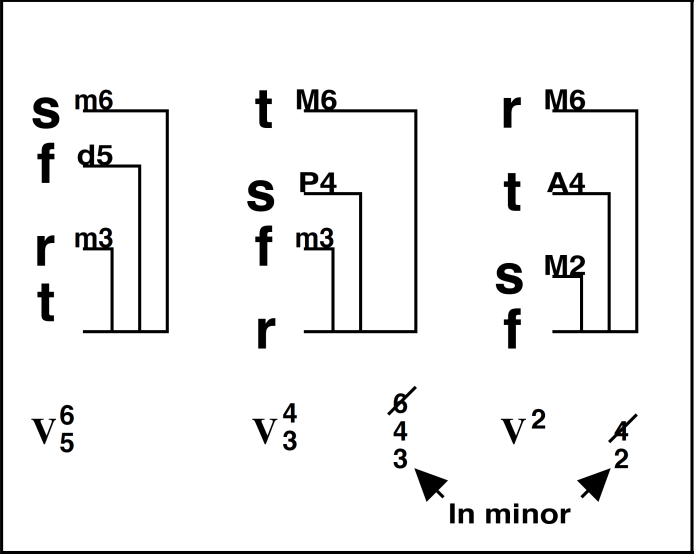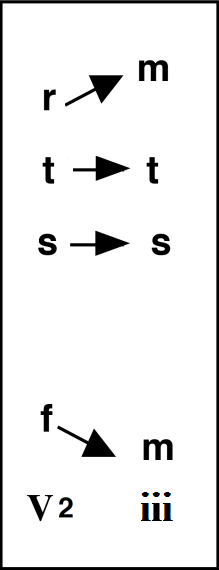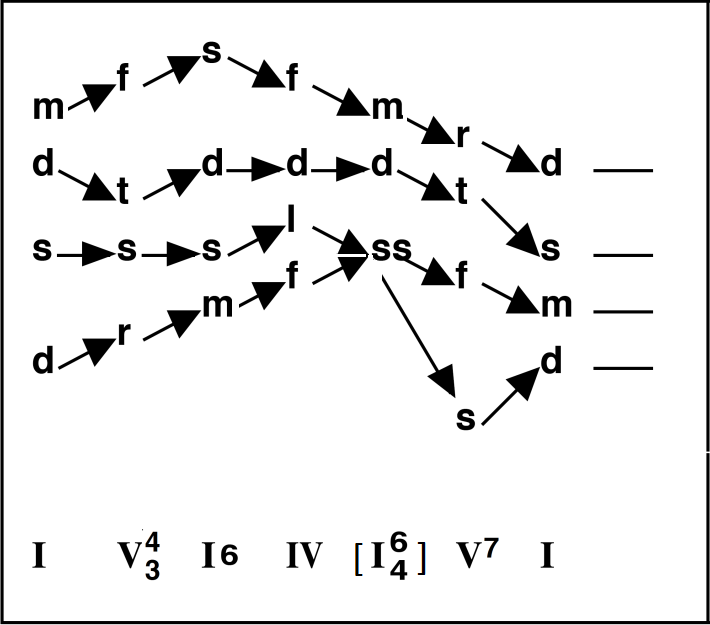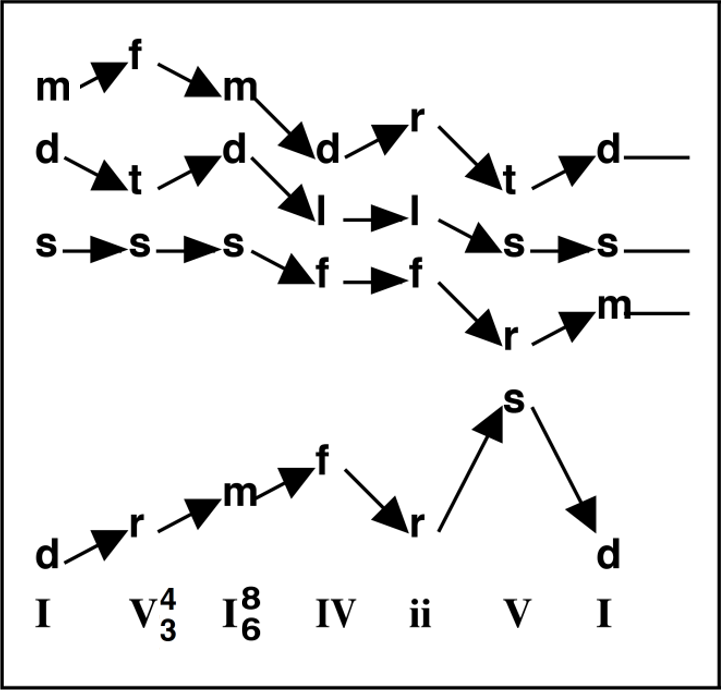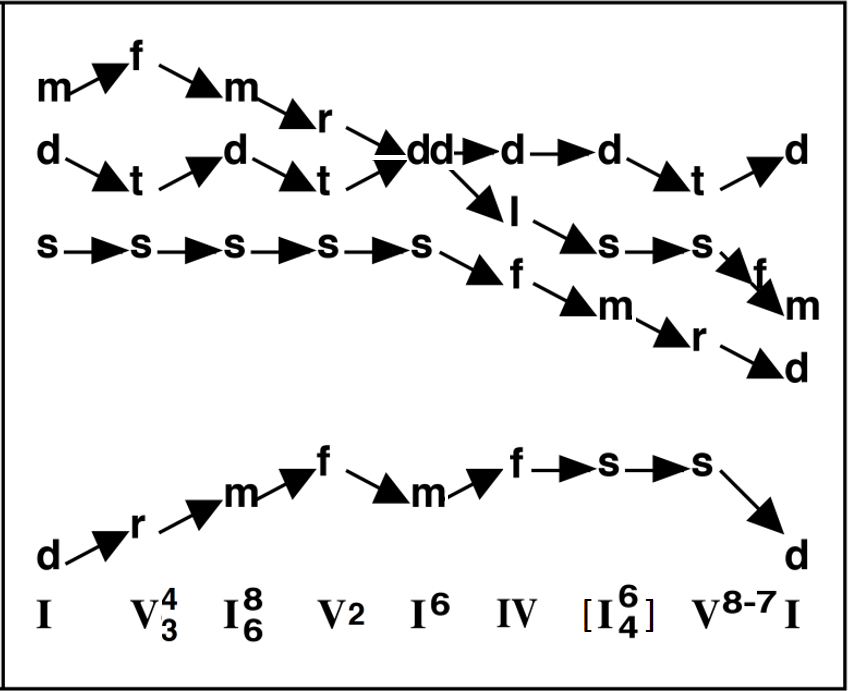8 Inversions of the Dominant Seventh Chord
When using a dominant seventh chord in inversion, usually all four notes are present and there are no doubled notes.
- The V
 chord has ti (the third of the chord) in the bass. The intervals over the bass are a 6th, 5th, and 3rd. The chord is typically notated as V
chord has ti (the third of the chord) in the bass. The intervals over the bass are a 6th, 5th, and 3rd. The chord is typically notated as V , with the 3rd over the bass being implied in the analysis.
, with the 3rd over the bass being implied in the analysis. - The V
 has re (the fifth of the chord) in the bass. The intervals over the bass are a 6th, 4th, and 3rd. The chord is typically notated as V
has re (the fifth of the chord) in the bass. The intervals over the bass are a 6th, 4th, and 3rd. The chord is typically notated as V , with the 6th over the bass being implied in the analysis.
, with the 6th over the bass being implied in the analysis. - The V2 has fa (the seventh of the chord) in the bass. The intervals over the bass are a 6th, 4th, and 2nd. The chord is typically notated as V2 or V
 , with the 6th over the bass being implied in the analysis.
, with the 6th over the bass being implied in the analysis.
Major
Minor
The dominant seventh chord inversions are the same in major and parallel minor keys, but in harmonic minor the figured bass needs to indicate the raised leading tone by a ![]() ,
, ![]() , or a number with a slash.
, or a number with a slash.
Resolutions of V7 inversions
- The V
 chord has ti in the bass, which resolves to do (root position I chord).
chord has ti in the bass, which resolves to do (root position I chord). - The V
 has re in the bass, which resolves either to do (I) or mi (I
has re in the bass, which resolves either to do (I) or mi (I ) with an irregularly doubled 3rd.
) with an irregularly doubled 3rd. - The V2 has fa in the bass, which resolves to mi (I6) or mi (I
 ) with an irregularly doubled 3rd. By keeping two common tones, the V2 may also resolve to iii.
) with an irregularly doubled 3rd. By keeping two common tones, the V2 may also resolve to iii. - So is always kept as a common tone.
Voice Leading
A. Regular resolutions
FIRST INVERSION
1. V![]() to I in major (i in minor): ti in the bass resolves to do
to I in major (i in minor): ti in the bass resolves to do
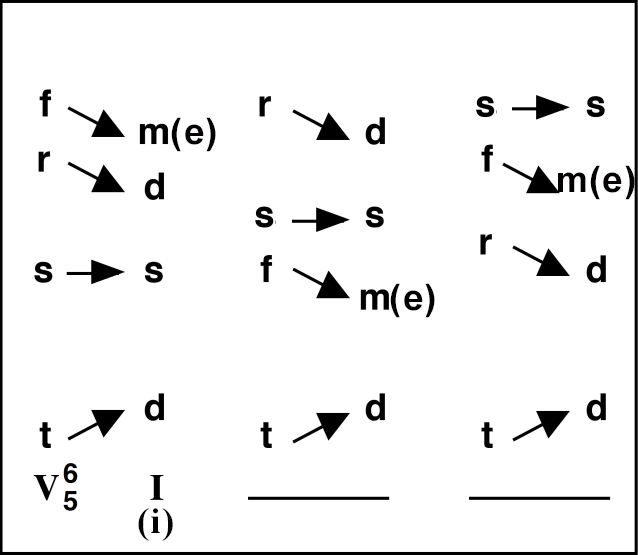
SECOND INVERSION
2a. V![]() to I in major (i in minor): re in the bass resolving to do
to I in major (i in minor): re in the bass resolving to do
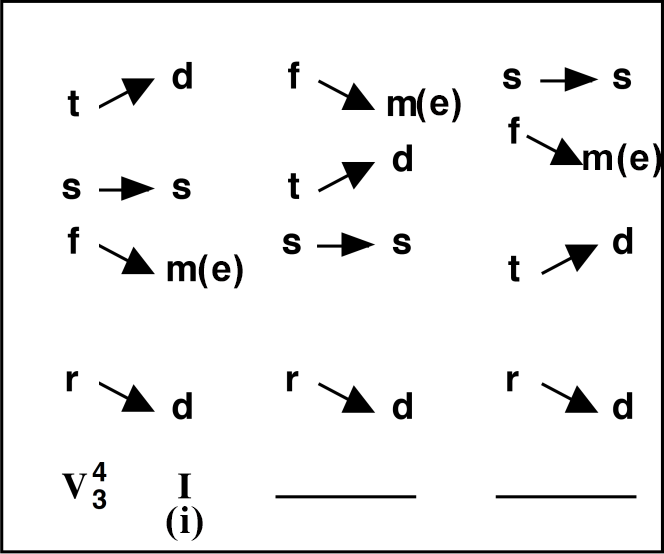
2b. V![]() to I
to I ![]() in major (i
in major (i ![]() in minor): re in the bass resolving to m(e). The
in minor): re in the bass resolving to m(e). The ![]() in the figured bass indicates the irregularly doubled bass (the 3rd of the chord).
in the figured bass indicates the irregularly doubled bass (the 3rd of the chord).

THIRD INVERSION
3a. V2 to I6 (i6 in minor): fa in the bass resolves to m(e)
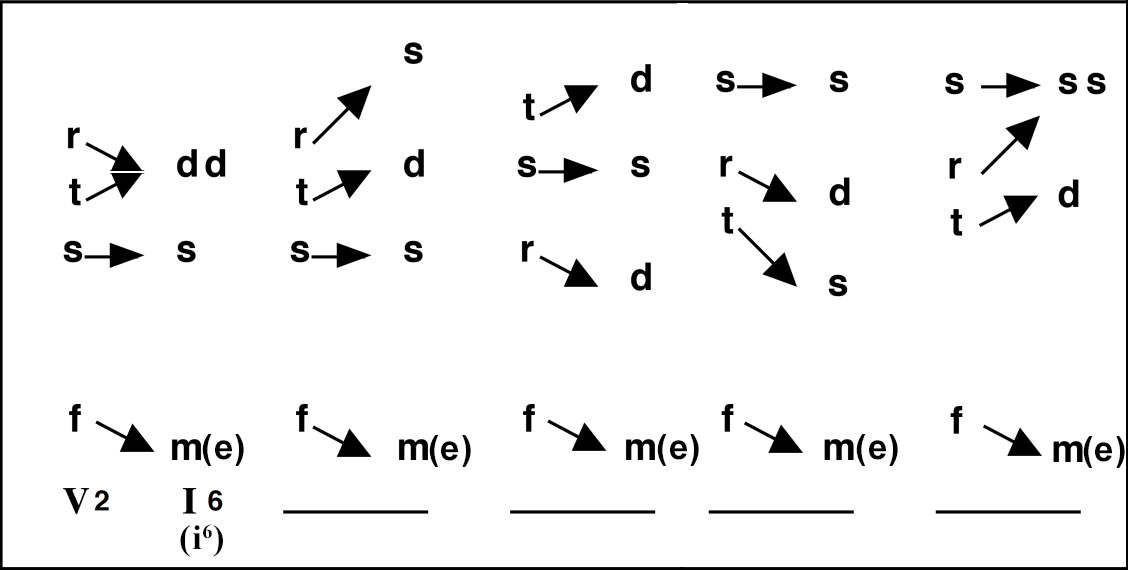
3b. V2 to iii: fa in the bass resolving to mi. Major only.
B. Irregular resolutions
1. The progression of I – V![]() – I6 with a do – re – m(e) bass and a m(e) – fa – so soprano results in parallel 10ths in the outer voices that cover the irregular movement of a d5 to P5.
– I6 with a do – re – m(e) bass and a m(e) – fa – so soprano results in parallel 10ths in the outer voices that cover the irregular movement of a d5 to P5.
2. The progression of I – V![]() – I
– I![]() with do – re – m(e) in the soprano produces an irregularly doubled 3rd in octaves in the tonic triad.
with do – re – m(e) in the soprano produces an irregularly doubled 3rd in octaves in the tonic triad.
3. The I![]() with an irregularly doubled 3rd functions as a passing chord between two dominant seventh inversions: V
with an irregularly doubled 3rd functions as a passing chord between two dominant seventh inversions: V![]() – I
– I![]() – V2. A voice exchange occurs in the outer voices: fa – m(e) – re and re – m(e)– fa.
– V2. A voice exchange occurs in the outer voices: fa – m(e) – re and re – m(e)– fa.
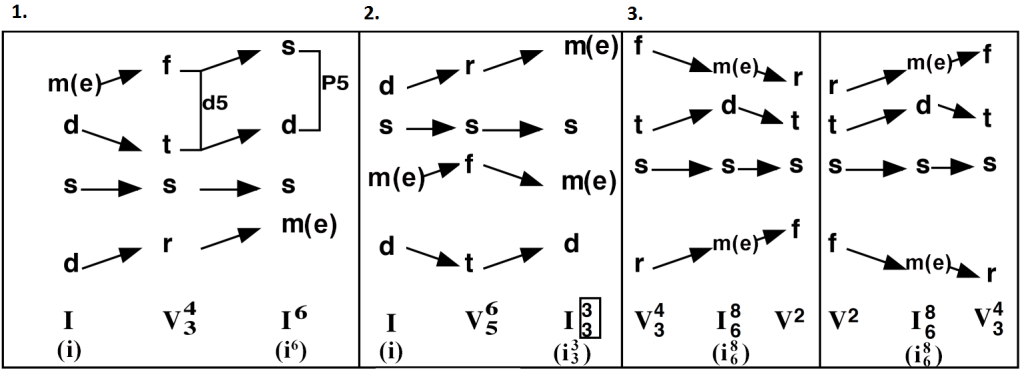
4. An example of acceptable parallel 5ths with V![]() moving to I6. Works in minor by adding me and le.
moving to I6. Works in minor by adding me and le.
In harmonic minor, the raised 6 th of the V ![]() chord indicates the raised leading tone.
chord indicates the raised leading tone.
5. An example of V![]() moving to an irregularly doubled I
moving to an irregularly doubled I![]() . Works in minor by adding me and le.
. Works in minor by adding me and le.
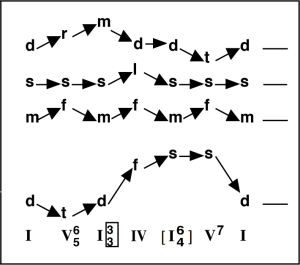
6. An example using the irregularly doubled I![]() . Contrary motion between I
. Contrary motion between I![]() and IV avoids parallel octaves. Works in minor by adding me and le.
and IV avoids parallel octaves. Works in minor by adding me and le.
7. An example using the irregularly doubled I![]() as a passing chord between V
as a passing chord between V![]() and V2. Works in minor by adding me and le.
and V2. Works in minor by adding me and le.
C. Prolonging the Dominant Seventh
The dominant seventh chord can be prolonged through the consecutive use of its inversions. Keep at least one common tone between the inversions or move three voices against one voice in contrary motion. The last dominant seventh chord in the progression resolves to the tonic.
